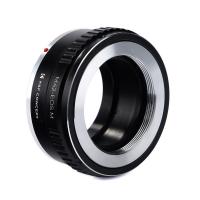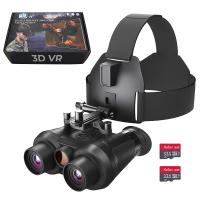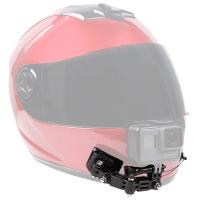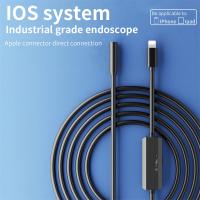How To Transport Microscope ?
To transport a microscope, it is important to first remove any slides or specimens from the stage and secure the stage clips. Next, lower the stage and secure the coarse and fine focus knobs. If the microscope has a movable head, secure it in place. Finally, cover the microscope with a protective case or cloth and transport it in a secure and stable manner to prevent any damage.
1、 Proper Handling Techniques

How to transport microscope:
When transporting a microscope, it is important to take certain precautions to ensure that it is not damaged. Here are some steps to follow:
1. Remove any slides or specimens from the microscope before transporting it.
2. Secure the microscope in a carrying case or box. Make sure that the case is padded and that the microscope is snugly fitted inside.
3. If the microscope has a separate eyepiece or objective lens, remove them and pack them separately.
4. If the microscope has a built-in light source, make sure that the bulb is removed or secured in place to prevent it from breaking during transport.
5. Handle the microscope with care, avoiding any sudden movements or jolts that could damage the delicate internal components.
Proper Handling Techniques:
When handling a microscope, it is important to follow proper techniques to avoid damaging the instrument. Here are some tips:
1. Always use both hands to carry the microscope, one hand on the arm and the other supporting the base.
2. Avoid touching the lenses or mirrors with your fingers, as this can leave smudges or fingerprints that can affect the quality of the image.
3. Use lens paper or a soft cloth to clean the lenses and mirrors, and avoid using harsh chemicals or abrasive materials that could scratch the surfaces.
4. When adjusting the focus or other settings, use gentle, smooth movements to avoid putting undue stress on the internal components.
5. When not in use, store the microscope in a dry, dust-free location to prevent damage from moisture or debris.
In addition to these basic techniques, it is important to follow any specific instructions provided by the manufacturer or your instructor to ensure that you are using the microscope correctly and safely. With proper handling and transport, a microscope can provide years of reliable service and accurate results.
2、 Secure Packaging Materials

How to transport microscope:
Transporting a microscope can be a delicate process, as it is a sensitive instrument that requires careful handling. Here are some tips on how to transport a microscope safely:
1. Secure Packaging Materials: The first step in transporting a microscope is to ensure that it is packed securely. Use a sturdy box that is large enough to accommodate the microscope and any accessories. Wrap the microscope in bubble wrap or foam padding to protect it from any bumps or jolts during transport.
2. Labeling: Label the box with "Fragile" and "Handle with Care" to alert the carrier that the contents are delicate and require special handling.
3. Disassemble: If possible, disassemble the microscope and pack each component separately. This will help to prevent any damage that may occur during transport.
4. Temperature Control: Microscopes are sensitive to temperature changes, so it is important to keep them at a consistent temperature during transport. Avoid exposing the microscope to extreme temperatures or direct sunlight.
5. Insurance: Consider purchasing insurance for the microscope during transport. This will provide added protection in case of any damage or loss.
In addition to these tips, it is important to choose a reputable carrier with experience in transporting delicate instruments. With proper packaging and handling, a microscope can be safely transported to its destination.
3、 Temperature and Humidity Control

How to transport microscope:
Transporting a microscope can be a delicate process, as it is a sensitive instrument that requires careful handling. Here are some tips on how to transport a microscope safely:
1. Remove the eyepiece and objective lenses and pack them separately in padded containers.
2. Secure the microscope body in a padded case or box, making sure it is tightly packed and cannot move around during transport.
3. Label the package as fragile and handle with care.
4. Use a reputable shipping company that specializes in delicate and sensitive equipment.
5. Consider purchasing insurance for the shipment to protect against any damage that may occur during transport.
Temperature and Humidity Control:
Temperature and humidity control are important factors to consider when storing or using a microscope. Extreme temperatures and humidity can damage the delicate components of a microscope, affecting its performance and accuracy. It is recommended to store a microscope in a cool, dry place, away from direct sunlight and moisture. When using a microscope, it is important to maintain a stable temperature and humidity level in the room to ensure accurate results. Some microscopes may come with built-in temperature and humidity control features, but if not, it is important to monitor and control these factors manually. Regular maintenance and cleaning of the microscope can also help to prevent damage caused by temperature and humidity fluctuations.
4、 Transportation Modes

How to transport microscope:
When transporting a microscope, it is important to handle it with care to avoid damage. Here are some tips on how to transport a microscope:
1. Use a sturdy carrying case or box to protect the microscope during transportation.
2. Remove any detachable parts, such as the eyepiece and objective lenses, and pack them separately to prevent damage.
3. Secure the microscope in the carrying case or box with padding or foam to prevent it from moving around during transportation.
4. Avoid exposing the microscope to extreme temperatures or humidity during transportation, as this can damage the lenses and other components.
5. If transporting the microscope by car, place it in the trunk or on the floor of the back seat to avoid jostling during the ride.
Transportation Modes:
When it comes to transporting a microscope, there are several transportation modes to consider. These include:
1. Ground transportation: This includes shipping the microscope by truck or car. Ground transportation is a cost-effective option for transporting microscopes over short distances.
2. Air transportation: This involves shipping the microscope by plane. Air transportation is a faster option for transporting microscopes over long distances, but it can be more expensive.
3. Sea transportation: This involves shipping the microscope by boat. Sea transportation is a cost-effective option for transporting microscopes over long distances, but it can take longer than air transportation.
4. Courier services: This involves using a courier service to transport the microscope. Courier services offer fast and reliable transportation, but they can be more expensive than other options.
In the current COVID-19 pandemic situation, it is important to take extra precautions when transporting a microscope. This includes wearing gloves and a mask when handling the microscope, and disinfecting it before and after transportation to prevent the spread of the virus.





































